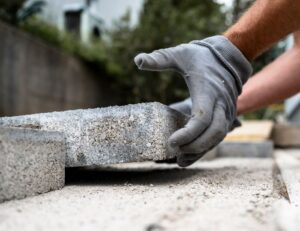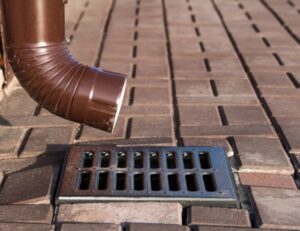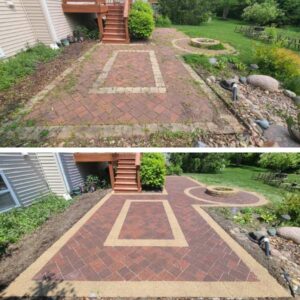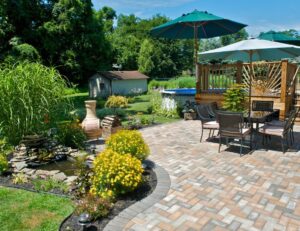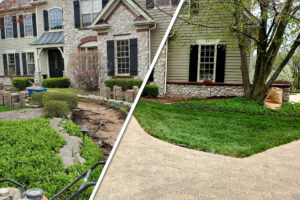If your home has a brick/block paver step and it’s just not holding up like it used to, then it might be the time to call an expert. There are various reasons why your step can fail over the years; one of those reasons can be lack of compaction of the base when initially installed. Poor structural design and/or harsh weather (freezing and thawing cycles), contract and expand the ground, causing the base and step to shift ultimately become culprits for a failed step.
In other cases, it can also be a critter problem, it’s very common in northern states for chipmunks/squirrels to dig out and nest/stash their goodies close to the house since the house will emit heat during the winter. When critters dig out close to or under the step most likely they will dig out parts of the base where the step sits, which undoubtedly will weaken the base structure and will cause the step to sink soon or overtime. We recommend to our clients when they see squirrels going into the ground close to their steps or any other cement structure to hire a pest control professional and address the critter issue to prevent future or further damage.
It’s true that once your step starts to shift and settle most likely the edges will subsequently become loose and will overall make the step unsecure, unsafe and a tripping hazard for you and your loved ones. Applying mortar/adhesive to loose pieces can make a temporary fix, however it can be a temporary and dangerous band-aid that can leave you, your loved ones and guests exposed to a tripping hazard.
When quoting jobs, we often hear all kinds of stories from our clients; from them trying to fix it to save a penny, to handy men or landscapers who in most cases end up with the same result in a short period of time.
This needs to be treated from the root; that means that a partial or complete reset might be needed depending on the damage. This involves a process where the step either fully or partially will have to be removed from the bottom, followed by proper cleanup of old mortar/adhesive so that when it is rebuilt, a successful adhesion is achieved. It is important to check for base depth and of course compaction of the base is crucial before rebuilding it as this will prevent future sinking. Before the rebuilding part of the step, it is also very important that the steps’ height is within the code and that they are all the same. Once the step has been rebuilt it is also recommended to check for the surroundings of the step and make sure it has a proper slope so that when it rains the water properly flows away from the house and step; this will ensure that the repairs performed will last.
At Amazing Paver Restoration Inc., when we take on a project, we treated it as if it were for our own family. We look for long term relationships from our clients by continuing to provide a valuable service and perfect every step of the way to solve your paver needs. We want your hardscapes to look and be at their best.




